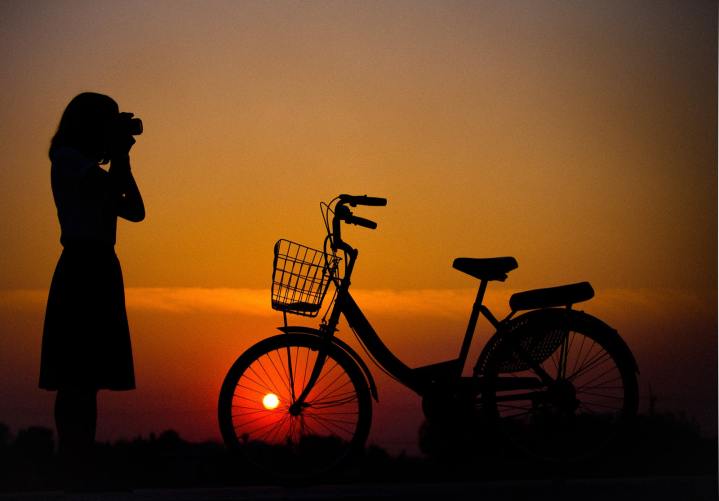
With Canon, Nikon, and Panasonic jumping on board, 2018 was undoubtedly the year of full-frame mirrorless. Now that a handful of companies have managed to cram large, high-resolution sensors into (relatively) compact camera bodies, what’s next for the camera industry?
The answer may not come exclusively in the form of new hardware. With many models already featuring high-end, high-resolution sensors, upcoming cameras may devote more resources to software-based abilities. Smartphones are already predicted to launch with three or more lenses next year, but computational photography could result in more features inside dedicated cameras as well.
“Resolution is at an all-time high, zoom is at an all-time high. Computational photography is next,” says Scott Peterson, an analyst in the photography, smartphone, and digital assistant sectors with Gap Intelligence. Peterson is hopeful the industry will see more “tricks” like Olympus’ high-resolution stitch mode, as well as cameras becoming more content-aware using artificial intelligence (A.I.).
Brands to watch
While Canon and Nikon launched full-frame mirrorless systems in 2018 (and Panasonic announced it would go full-frame in 2019), several other brands have voiced contentment in their current categories, including Olympus in the Micro Four Thirds space and Fujifilm with its medium format and APS-C mirrorless systems which skip over full frame (see our explainer on sensor size to learn more about these different formats).
Other companies may surprise in 2019. Sigma is part of the new L-Mount Alliance alongside Leica and Panasonic. The company hasn’t said whether or not a new camera body is in the works or whether it will simply focus on lenses, but Sigma makes some very unique cameras that could benefit from being part of a shared ecosystem with more traditional brands.
Panasonic will for sure release two L-Mount cameras in 2019, the S1 and S1R it teased earlier this year. While Panasonic has already shared some information about the new full-frame models, including some of their key features like 60 fps 4K, image stabilization, and dual card slots, we have yet to see the full spec lists. We expect the S1 will provide strong competition to the likes of the Sony A7 III and Nikon Z6, while the S1R will compete against the higher-resolution Sony A7R III and Nikon Z7.
Video is another area that may see some dramatic changes in 2019. As 4K becomes mainstream, 8K may begin to trickle out to high-end models, Peterson suggests. He also notes that 360 video cameras haven’t been performing well and likens them to the 3D TV craze that quickly fizzled out. Even the more popular models like the Samsung Gear 360 have suffered huge price drops and haven’t seen recent updates. The action camera category is also one that’s facing challenges, even as GoPro’s new Hero7 Black impresses with its HyperSmooth stabilization technology.
While DSLRs hold about 30 percent of the industry and mirrorless cameras 25 percent, the compact category is being inflated by instant film cameras. In Gap Intelligence data, the Fujifilm Mini 9 is the most popular camera while digital-to-print cameras using Zink Zero-Ink technology are also selling well.
What’s ready for an update?
Often, looking at past camera launches offers insight into what may be next for each camera brand — although to be sure, update schedules aren’t set in stone. But, looking at which cameras are getting “old” can sometimes offer insight into what the brand may be focusing on for next year.
For Canon, the flagship EOS 1D X Mark II turns 3 years old in 2019. Several of the brand’s advanced compacts like the PowerShot G9 X Mark II and G1 X Mark III will be two years old by the end of 2019, though the GI X went three years between the Mark II and Mark III versions.
Likewise, the Nikon D5, Nikon’s answer to the 1D X Mark II, is starting to show its age. The company’s entry-level full-frame DSLRs, the D610 and D750, will also be 3 and 4 years old, respectively, in 2019. These models, however, lack significant competition from other DSLRs, and Nikon may be focusing its entry-level camera efforts on the new mirrorless Z series.
Sony’s speedy A9 turns two in April. While now largely recognized for full-frame mirrorless, the smaller-format A6500 will turn three next November and will need a replacement if Sony hopes to compete with the likes of the Fujifilm X-T3. The Sony RX10 IV, the advanced compact superzoom, also turns two in the fall of 2019.
Fujifilm’s X-T20, one of our favorite midrange cameras, launched in 2017 just months after the X-T2. Given that the X-T3 has been out for nearly 6 months, we wouldn’t be surprised to see a replacement to the X-T20 in early 2019.
Panasonic fans are eagerly awaiting the S1 and S1R, but other models could be due for an update, since the company says the Lumix G series isn’t being ousted by the new S series. The Panasonic GH5 launched in 2017, roughly 3 years after the GH4. Could a GH6 happen in 2019? Perhaps, but we expect Panasonic will take the time it needs to make it a significant leap forward (think 8K video). Some of Panasonic’s fixed-lens zoom cameras are also due for an update.
Olympus had a quiet 2018, launching the beginner-friendly E-PL9. Its flagship E-M1 Mark II is now well over 2 years old. Does Olympus have a few surprises up its sleeves? As 2019 marks the company’s 100-year anniversary, we can certainly hope so.
Ricoh also had a quiet year, highlighted by the launch of the Ricoh GR III and K-1 Mark II. The company’s APS-C DSLRs, like the K-70, could be due for an update.
We may not have to wait long to turn speculation into cold, hard facts. The Consumer Electronics Show (CES) is in January, followed by the Wedding and Portrait Photographers International (WPPI) and CP Plus shows in February. This puts opportunities for new camera announcements right around the corner.



